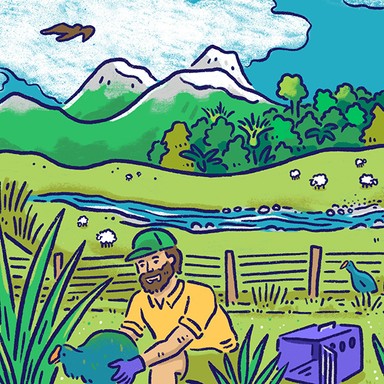
Otago Regional Council

Environment and biodiversity
Protecting the environment and managing natural resources is a key responsibility of regional councils. Regional councils are often also involved in pest control and resource management.

Environment and biodiversity
Protecting the environment and managing natural resources is a key responsibility of regional councils. Regional councils are often also involved in pest control and resource management.
Let's preserve and protect what biodiversity already exists and give priority to native flora and fauna.
Regional environmental policies require community buy-in and, after that, education and enforcement.
Otago Regional Council must be far more responsive and proactive response to pollution – and police the public sector as well as the private.
Commit to implementing existing biosecurity and biodiversity tools by working with communities to make these tools workable and effective.
Invest in environmental monitoring, science and mātauranga Māori so we can make decisions based on the best information available.
Work with territorial local authorities to implement a region-wide climate action plan based on Otago's climate risk assessments and greenhouse gas profile.
Review the Biodiversity Action Plan to make sure it is achieving what it set out to do.
Review the effectiveness of the environmental enforcement and compliance division of the council.
Ensure that the Otago Regional Council implement the National Policy Statement on Freshwater Management without further delay.
Ensure that the Otago Regional Council include public feedback in completing the forthcoming land and water plan for Otago.
Encourage and support technical Otago Regional Council staff to better monitor fresh water and marine environments for invasive pest species.
Ensure pest management is effective and targeted across the region.
Support the ecofund.
Increased use of technology for data collection and monitoring.
Let's preserve and protect what biodiversity already exists and give priority to native flora and fauna.
Regional environmental policies require community buy-in and, after that, education and enforcement.
Otago Regional Council must be far more responsive and proactive response to pollution – and police the public sector as well as the private.
Commit to implementing existing biosecurity and biodiversity tools by working with communities to make these tools workable and effective.
Invest in environmental monitoring, science and mātauranga Māori so we can make decisions based on the best information available.
Work with territorial local authorities to implement a region-wide climate action plan based on Otago's climate risk assessments and greenhouse gas profile.
Review the Biodiversity Action Plan to make sure it is achieving what it set out to do.
Review the effectiveness of the environmental enforcement and compliance division of the council.
Ensure that the Otago Regional Council implement the National Policy Statement on Freshwater Management without further delay.
Ensure that the Otago Regional Council include public feedback in completing the forthcoming land and water plan for Otago.
Encourage and support technical Otago Regional Council staff to better monitor fresh water and marine environments for invasive pest species.
Ensure pest management is effective and targeted across the region.
Support the ecofund.
Increased use of technology for data collection and monitoring.
Mayor
Compare the mayoral candidates in your area
Local council
Compare the candidates for your city or district council
Regional council
Compare the candidates for your regional council
Local board
Compare the candidates for your local or community board






